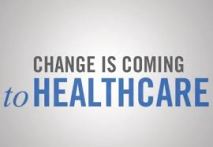With the ONC’s recent release of their 10-year interoperability vision, it might seem like the industry is starting to make things easier for clinicians. In reality, 2015 is starting off to be one of the worst times ever to be a physician. Interoperability is a critical issue to support a transition from fee-for-service to value-based care. Physicians will eventually be reimbursed around their ability to impact clinical outcomes, so the need for clinically relevant information at their fingertips is mission critical.
Tag Archives: health systems
Healthcare in South Africa – Two Systems, Common Challenges
When it comes to mHealth, most industrialised nations such as the U.S. and Europe have a head start. Money for healthcare technology investments is available, the infrastructure is in place, and most of the population is already engaged in the healthcare system.
As a country of about 52 million people, South Africa shares many characteristics with its larger brethren. There is a mix of public and private healthcare providers and health insurance plans, physician shortages in key areas, and South Africa is beset by many of the same chronic diseases that industrialised countries face (cardiovascular and obesity-related diseases, diabetes, etc.).
Today’s Pressure Breeds Tomorrow’s Solutions
It is no secret that health systems are under intense pressure to deliver better outcomes at lower costs, and standardizing acute care workflow will only carry providers so far. Truly moving the needle on cost and outcomes will require a fundamental redesign in care delivery; otherwise, health systems may well find themselves left out. Care keeps shifting to environments in which hospitals have less influence: what was once critical care can now be managed in an in-patient unit; what was once in the hospital is now in an office; what was once in the office is now at home.
Creating a Friendly Environment for Adoption of Clinical Decision Support
In recent years, our ability to stream large amounts of data in real-time has improved dramatically. This enhancement can transform how clinicians offer care by sourcing unprecedented opportunities for clinical decision support. However, the capability to process, store, and display data in and of itself does not transform care. Rather, it is how the clinicians adopt and apply decision support that will make all the difference to patients. However, the current environment must be altered to create a clinical decision support-friendly climate.
Future of Health Care: Keeping the Patients in Mind
 The key to successful health care technology is making sure it improves both the patient experience and the quality of care. While technology is sometimes seen as a barrier to human connection and interaction, the right tools can transform the health care experience for the patient. At Dignity Health, our focus for 2015 is centered on making population health a reality by looking toward the ambulatory side of care. The mobility strategy we put in place in 2014 is enabling us to empower our providers and care teams with telehealth solutions so they can have alternate ways to connect with and care for their patients.
The key to successful health care technology is making sure it improves both the patient experience and the quality of care. While technology is sometimes seen as a barrier to human connection and interaction, the right tools can transform the health care experience for the patient. At Dignity Health, our focus for 2015 is centered on making population health a reality by looking toward the ambulatory side of care. The mobility strategy we put in place in 2014 is enabling us to empower our providers and care teams with telehealth solutions so they can have alternate ways to connect with and care for their patients.
Transformation in 2015: Focusing Technology on the Patient
 We are currently experiencing the biggest transformation in healthcare ever. Technology plays a significant role as an enabler of this transformation, but will not drive it alone. Improving patient care and driving toward patient engagement are crucial goals in this next phase of the healthcare industry. To make adoption ubiquitous and implementation effective, there are several things we should focus on as we dive into 2015:
We are currently experiencing the biggest transformation in healthcare ever. Technology plays a significant role as an enabler of this transformation, but will not drive it alone. Improving patient care and driving toward patient engagement are crucial goals in this next phase of the healthcare industry. To make adoption ubiquitous and implementation effective, there are several things we should focus on as we dive into 2015:
Data, Data Everywhere and Not a Drop to Drink
 Clinicians want two things from data. On an individual patient level, they need to be able to see the data whenever and wherever they want – in a clean at-a-glance format and with essentially zero lag time. And at a cohort (population) level, they want the data presented as meaningful information in a way that enables conclusions, decisions, and actions about a group of patients.
Clinicians want two things from data. On an individual patient level, they need to be able to see the data whenever and wherever they want – in a clean at-a-glance format and with essentially zero lag time. And at a cohort (population) level, they want the data presented as meaningful information in a way that enables conclusions, decisions, and actions about a group of patients.
These statements may seem like self-evident Data 101 to many of you, but in my decades of experience working clinically as an emergency physician and being responsible for operations of multiple emergency departments, it is clear that we have not delivered on this vision. In fact, the healthcare world lags other industries by 15-20 years in the availability, presentation, and use of information. Although our industry is catching up, there is still more effective use of information technology in banking, aviation, on-line retail, and a multitude of other industries. Even though many of the concepts of optimum presentation and use of data have been around for decades – the quest for electronic health records began in the 1980s – their breadth of execution and the realization of their value propositions have not been sufficient to become the norm. Healthcare has moved at a glacial speed of change, at least until recently.
Mobile solutions that support our clinical (and life) workflow
There are more mobile devices than there are people on the planet. Many of us look at our phones more than 70 times a day. We bring them with us everywhere we go – to the movies, to our children’s soccer games and to work.
Many of us even have work environments that allow us to ‘bring your own device.’ If that is not an option, our work devices (thankfully!) are looking more and more like our personal devices. And in healthcare, we are now successfully addressing challenges to building mobile healthcare solutions that support our natural use and knowledge of these devices in our life flow.
The Evolution of Health IT
Health IT is often considered a silent partner in healthcare – not seen by patients, but a critical part of the system. As we celebrate National Health IT Week, it’s important to realize that although health IT already has a long history, the constant and rapid evolution of this space continues to transform the market. Information has been collected and stored for years, but the promise of clinical decision support has us at the cusp of all this information becoming valuable in new and innovative ways.
Just a decade ago, I was documenting patient encounters in paper charts. Although the transition to electronic medical records (EMRs) has been perceived as slow, in the grand scheme of medicine it actually happened almost overnight. These systems were not designed with our continuously changing workflow in mind, with user interfaces and workflows that aligned to our practices. They served as repositories for patient information, but did little else. In fact, our workflow changed to support the EMR, sometimes to the detriment of the patient. Instead of focusing directly on the patient, we often must split our time and attention between the patient and the computer terminal.
Cerner/Siemens and Blue Shield/Blue Cross: What Happens Next?
The industry is buzzing over the news that Cerner is buying the health information technology business unit of Siemens. The Siemens acquisition is the most recent high-profile example of consolidation that is taking place in all sectors of healthcare.
The consolidation trend is not new, of course. Providers reacted first, by aligning as Accountable Care Organizations (ACOs) and clinical integration (CI) networks during the past five years. Then the passing of the Affordable Care Act (ACA) accelerated the need for collaboration, forcing providers to acquire additional acute care and post-acute care facilities as well as physicians’ offices. This consolidation trend was the first to expose the obvious lack of interoperability amongst vendors.

